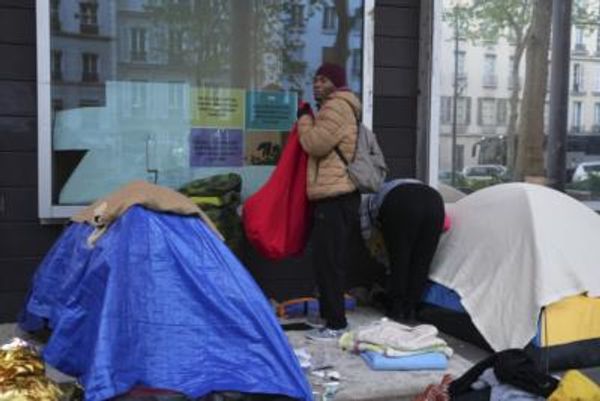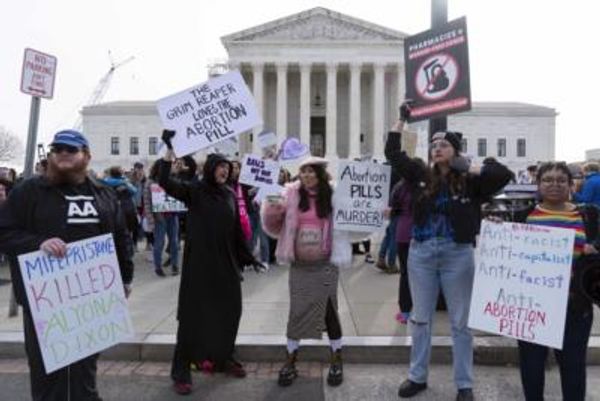
Central bank officials think it is possible with calibrated interest rate increases that slow booming demand just enough to take steam out of an overheated economy. But even one of the Fed’s closest allies, U.S. Treasury Secretary Janet Yellen, sees the risk of failure. “It will require skill and also good luck," the former Fed chair said in public comments in Washington last week.
During the past 80 years, the Fed has never lowered inflation as much as it is setting out to do now—by four percentage points—without causing recession. In this case, the central bank will need a number of factors out of its control to break its way.
Still, Fed officials can find reason for both optimism and caution from history. In seven different episodes during the past 80 years, inflation has fallen as much as the Fed bank wants it to drop now, with varying outcomes. The episodes suggest that the desired scenario is theoretically possible though the risk of failure is high, especially because the bank is chasing inflation that already exists, rather than addressing the problem before it arises as it did in some earlier episodes.
If the Fed is to land the plane safely, the labor market will be key. Typically during a recession joblessness rises sharply. At 3.6% the unemployment rate is now exceptionally low and demand for workers is so intense that companies have listed millions of unfilled job openings.
Fed officials say they can curb that demand, causing employers to eliminate vacancies without laying off existing workers, and tamp down inflation without a recession—what economists would refer to as a “soft landing."
“No one expects that bringing about a soft landing will be straightforward in the current context—very little is straightforward in the current context," Fed Chairman Jerome Powell said last month. The central bank, he added, faces a “challenging task."
Landing Scenarios
During the early 1980s, the U.S. experienced a classic hard-landing as economists dub it—falling into a deep recession with double-digit unemployment after the Fed pushed its benchmark interest rate to nearly 20% to tame stubbornly high inflation that had been rising for more than a decade.
The U.S. had less severe, but bumpy landings during the 1950s, characterized by short-lived inflation spikes and recessions. During that period, the unemployment rate rarely got very high even when economic output contracted.
The 1970s delivered aborted landings, when inflation fell and then lurched higher, beset by outside shocks such as OPEC oil embargoes and policy missteps including a central bank that hesitated to raise interest rates aggressively.
The U.S. has had soft landings, too, most recently in 1994. Fed Chairman Alan Greenspan sharply raised rates to 6% in February 1995 from 3% one year earlier, and the unemployment rate kept going down. Unlike 1994, however, the Fed today is trying to reduce inflation that is already too high rather than prevent it from rising, as Mr. Greenspan did back then.
Fed officials have indicated that while they seek a soft landing, they will raise interest rates as much as necessary to lower inflation, even if that results in a downturn.
“My framework for thinking about the Fed right now is, 1994 is the goal, but they are not necessarily petrified of 1980 anymore, or at least not even close to as scared of 1980 as I thought they would have been," said Jon Turek, founder of policy research firm JST Advisors.
The Fed’s hope
Even before Moscow’s invasion of Ukraine in February, Mr. Powell was laying the groundwork for a more aggressive series of rate increases driven by concerns that labor markets were overheating. The war and new Covid-19 lockdowns in China, which have boosted prices while further disrupting supply chains, have made life harder for the Fed.
Consumer prices rose 6.4% in February from a year earlier, according to the Fed’s preferred gauge, the Commerce Department’s personal-consumption expenditures price index. Core prices, which exclude volatile food and energy price swings, climbed 5.4%. Those readings were the highest in around four decades.
Demand was stoked by low interest rates and $6.4 trillion of government borrowing and spending since Covid struck. Businesses and households spent money faster than a pandemic-strained economy could deliver goods and services, then prices soared.
“We really poured things on in terms of expansionary policy, with good intentions but predictable effects," said Robert Hall, a Stanford University professor who runs the National Bureau of Economic Research’s committee that dates the beginnings and ends of expansions.
The Fed lifted rates from near zero last month by a quarter percentage point and penciled in a series of rises this year and next. Interest rate increases are meant to slow demand by restraining consumer and business borrowing.
In the scenario Fed officials mapped out, their benchmark interest rate will rise to around 2.75% by the end of next year, just above estimates of a rate that neither spurs nor slows growth.
They project inflation will drop to slightly above 2% by 2024, a rare four-percentage-point decline in less than three years. They see economic output growing at a rate between 2% and 3% while unemployment holds below 4%.
“That scenario seems unlikely to me," said Ellen Meade, who retired from the Fed last August as a senior policy adviser. “The probability of doing this without a hard landing has gone down."
John Taylor, an economist at Stanford University who is the author of an influential policy-setting rule of thumb called the “Taylor rule," says his formula calls for the Fed to set interest rates at 5% right now. Because the Fed is unlikely to lift rates so dramatically in one year, he said officials instead ought to raise rates to 3% by December and signal more increases after that unless inflation comes down.
“This is not the only time in history that they’ve been behind, but they are strikingly behind," said Mr. Taylor. “They need to catch up and do it in a systematic and understandable way."
Fixing imbalances
The Fed’s success will depend on several factors outside its control. Those include whether global energy supplies recover from the shock of Russia’s invasion of Ukraine, reducing energy prices; whether sidelined U.S. workers rejoin the labor force, easing the labor shortage and wage pressures; whether Chinese plants reopen in the face of more Covid-19 lockdowns, clearing supply bottlenecks; and whether Covid itself recedes for good in the U.S., ending related pandemic-related economic disruptions.
The Fed’s job will be easier if these supply constraints ease. If they don’t, the central bank will need to push rates higher to squeeze demand, with a risk of more damage to the economy.
A great deal boils down to the job market.
In February, U.S. companies listed 11.3 million unfilled job openings, four million more than before the pandemic, which even then was a record. Those openings mean firms are competing for scarce workers by bidding up wages, which pressures them to raise prices to keep profits strong.
Some of this gap was driven by a dearth of workers. The U.S. labor-force participation rate, at 62.4% in March, was still a percentage point below prepandemic levels, meaning fewer workers are looking for jobs.
The mismatch was also caused by demand-driven hiring by employers. As of February, the combination of unfilled and filled jobs has exceeded the total number of workers by the largest margin since World War II, according to an analysis by Goldman Sachs.
Goldman analysts estimate the Fed can achieve its goal of bringing down inflation and slowing upward wage pressures by reducing job openings by about 2.5 million.
If workforce participation rates return to prepandemic levels, that would add around 1 million workers, Goldman estimates, making the Fed’s job of easing supply-and-demand imbalances in the labor market somewhat easier.
In recent weeks, Fed officials have zeroed in on this logic.
“There is plenty of room for businesses to reduce the number of job openings," said Lael Brainard, a Fed governor awaiting Senate confirmation to become Fed vice chairwoman, in an interview with The Wall Street Journal last week. “I see that as being consistent both in bringing inflation down and sustaining the recovery."
A view from Gilbert
Tad Peelen, co-owner of a restaurant group in Gilbert, Ariz., sees the complexity of these supply and demand mismatches up close. For months he has been struggling to source supplies, such as plastic-foam cups, and couldn’t get them through normal supplier channels. For a while he thought the problem was production disruptions related to Covid. But he thinks the issue has morphed in the past 12 months. Now he thinks many suppliers are simply sold out because there are so many competitors opening around him.
His problem isn’t limited to serving cups.
“We had all come to the assumption there were fewer employees out there for us to choose from, but the pool of employees ready to go to work in restaurants is the same size or larger than before Covid," he said. “The reason we are struggling so much is because so many restaurants are opening. It has started to make sense to me."
He said he would welcome a modest slowdown, which could be a chance for him to give his workers a break and also might slow cost increases for supplies.
Parallels to the 1950s
Mr. Hall’s research has found that unemployment followed predictable patterns during and after recessions for several decades—sharp increases in the jobless rate during recession and then slow, steady declines during expansions, a pattern that held from the 1960s right up to 2020.
The pandemic scrambled those patterns, with the slow decline scenario being replaced by astonishingly fast descent. The unemployment rate swung during the pandemic from 3.5% in February 2020 to nearly 15% two months later and then back down, to 3.6% in March.
He said the lurching patterns he sees in unemployment today look more like they did in the 1950s, when he says there was “higher volatility of everything."
The U.S. bears another economic resemblance to the 1940s and 1950s, which produced bumpy landings; like then, it is going through a cycle of lurching fiscal policy.
Between 2020 and 2021, federal spending rose from 21% of gross domestic product to 31% of gross domestic product, and is projected by the White House Office of Management and Budget to return to 24% of GDP in 2022 and less than 23% of GDP in 2023. These are the largest swings in federal spending since World War II, an era when the Fed also kept interest rates low to support a post-Depression economy and the war effort.
Compared with today, the unemployment rate was less volatile during the 1950s as the Fed worked to stabilize inflation. It averaged 4.5% and exceeded 7% for only two months during the whole decade.
Ms. Brainard said waning fiscal stimulus would help to restrain demand this time around, too.
There is another parallel that gives some hope the Fed can pull off its task without sending joblessness much higher: Japan. By one rule of thumb Japan has experienced seven recessions since the mid-1990s and its unemployment rate never got much over 5%. Its aging workforce meant that even when economic output contracted, it didn’t have an abundance of people who wanted work and couldn’t find it.
For now, Fed officials are in agreement they should seek to raise rates quickly to a level that no longer provides stimulus. They have signaled they are likely to approve a half-percentage-point increase at their meeting next month, and possibly again in June. The Fed hasn’t raised rates in such a large increment since 2000.







